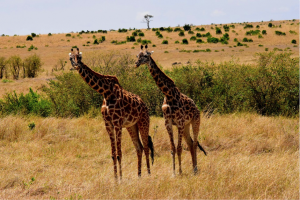How to take amazing photos on your Tanzania safari

For many Tanzania safari lovers, the adventure of a lifetime would not be complete without returning home with some amazing photos.
Located on Africa’s breath-taking East Coast, it’s estimated that over 1.2 million people visited the country last year. With more and more families turning to holiday specialists like www.tanzaniaodyssey.com it’s never been as simple to book a trip either so that number is set to increase for 2018.
With its natural beauty and famous landmarks, it won’t take you long to discover just how photogenic Tanzania is. Cameras are now omnipresent on most smartphones too so anybody can become a budding photographer.
Although operating your camera is relatively straight forward there are some things you should keep in mind.
Here are some tips to help you capture those memorable shots:
Light is essential
Wildlife photographers place a high emphasis on light. Soft light is ideal for safari photography as it helps to capture incredible and detailed images. Early morning and late afternoon/evening are the best times to take safari pictures while mid-day is the worst time. At mid-day, the light is harsh and it lowers the contrast of the images due to excessive white light.
Additionally, except when you’re trying to shoot silhouettes, experts advise that you should take snaps with the sun behind you in order to capture extra detail.
Composition and perspective
Photos with the main subject at the middle of the frame are popular and quite boring. To infuse creativity into your wildlife photography, consider applying the “Rule of Thirds.” The rule dictates that the subject of the snap should occupy a position just off centre – either to the right or the left. This approach adds more depth and definition to the image.
To get the best shots, you should also try shooting from different angles and perspectives- such as from an upward or downward position.
Location
Specific locations offer more spectacular shots than others so be selective. Tanzania has lots of natural beauty to choose from including the Serengeti’s vast unspoilt tracts of wilderness and the Savannah and Acacia trees that make for an iconic backdrop
Lake Manyara and Lake Natron are magnificent for snapping flamingos or head over to Zanzibar some of the most extravagant and colourful in Africa.
Shutter Speed
Many of the best wildlife photos are motion shots where the subject is moving instead of remaining still. Sometimes, this movement can be swift meaning that there’s little time to get a perfect shot. Wildlife photographers advise that the shutter speed should be high so you don’t miss a move when taking action photos.
A good rule of thumb is that uour shutter speed should always be at least twice your lens focal length so you can capture pin-sharp images. Birdlife shots require that your shutter speed should be at least three times your lens focal length.

